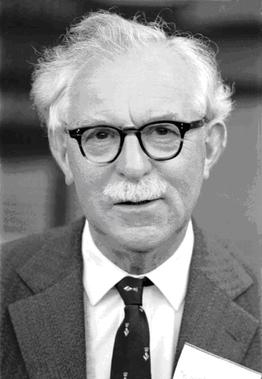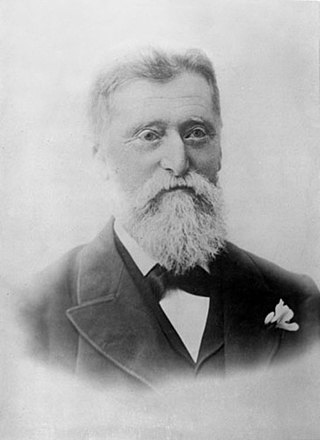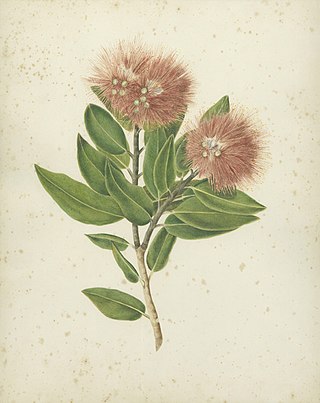
The Auckland War Memorial Museum, also known as Auckland Museum, is one of New Zealand's most important museums and war memorials. Its neoclassical building constructed in the 1920s and 1950s, stands on Observatory Hill, the remains of a dormant volcano, in the Auckland Domain, near Auckland CBD. Museum collections concentrate on New Zealand history, natural history, and military history.

William Thomas Stearn was a British botanist. Born in Cambridge in 1911, he was largely self-educated and developed an early interest in books and natural history. His initial work experience was at a Cambridge bookshop, but he also had an occupation as an assistant in the university botany department. At the age of 29, he married Eldwyth Ruth Alford, who later became his collaborator.
Richard Thomas Baker was an Australian economic botanist, museum curator and educator.

Hugh Hamshaw "Ham" Thomas, was a British paleobotanist.

Lucy May Cranwell was a New Zealand botanist responsible for groundbreaking work in palynology. Cranwell was appointed curator of botany at Auckland Museum in 1929, when she was 21 years old. As well as her work on ancient pollen samples she was responsible for encouraging a love of botany in a generation of Auckland children.

John Buchanan was a New Zealand botanist and scientific artist. He was a fellow of the Linnean Society.

Thomas Kirk was an English-born botanist, teacher, public servant, writer and churchman who moved to New Zealand with his wife and four children in late 1862. The New Zealand government commissioned him in 1884 to compile a report on the indigenous forests of the country and appointed him as chief conservator of forests the following year. He published 130 papers in botany and plants including The Durability of New Zealand Timbers, The Forest Flora of New Zealand and Students' Flora of New Zealand.

Sir Algernon Phillips Withiel Thomas was a New Zealand university professor, geologist, biologist and educationalist. He was born in Birkenhead, Cheshire, England in 1857 and died in Auckland, New Zealand in 1937. He is best known for his early research (1880–83) into the life cycle of the sheep liver fluke, a discovery he shared with the German zoologist Rudolf Leuckart, his report on the eruption of Tarawera (1888) and his contribution to the development of New Zealand pedagogy.

Georgina Burne Hetley was a New Zealand artist and writer. Her book The Native Flora of New Zealand was published in English and French.

Harry Howard Barton Allan was a New Zealand teacher, botanist, scientific administrator, and writer. Despite never receiving a formal education in botany, he became an eminent scientist, publishing over 100 scientific papers, three introductory handbooks on New Zealand plants, and completing the first volume of a flora in his lifetime.
Francis Blackwell Forbes was an American botanist with expertise in Chinese seed-producing plants who also worked as a merchant and opium trader in Asia.

James Cosmo Melvill was a British botanist and malacologist who collected plants in Europe and North America.
Peter James de Lange is a New Zealand botanist at Unitec Institute of Technology. He is a Fellow of the Linnean Society, and has received the New Zealand Botanical Society Allan Mere award and the Loder Cup for his botanical work. Two species are named in his honour.
Douglas Miller Reid (1897–1959) was a 20th-century Scottish schoolmaster and noted amateur botanist and botanical author.

Emma Cheeseman was a painter and taxidermist from England who emigrated to New Zealand as a child. Her work is held in the collection of Auckland War Memorial Museum.

Ellen Maud Cheeseman was a painter and botanist from England who emigrated to New Zealand as a child. Her watercolour paintings of New Zealand birds, animals and landscapes are in the permanent collection of Auckland War Memorial Museum.
Clara Cheeseman was a novelist from England who emigrated to New Zealand as a child.
James Stirton was a Scottish physician and one of Scotland's leading experts on cryptogamic botany. His investigations in bryology and lichenology earned him a world-wide reputation.

David John Galloway, FRSNZ was a biochemist, botanist, and lichenologist.
Arthur Wade was a botanist and lichenologist. He was Deputy Curator in the Department of Botany at the National Museum of Wales from 1920 until 1961. He was president of the British Lichen Society from 1964 until 1966.













